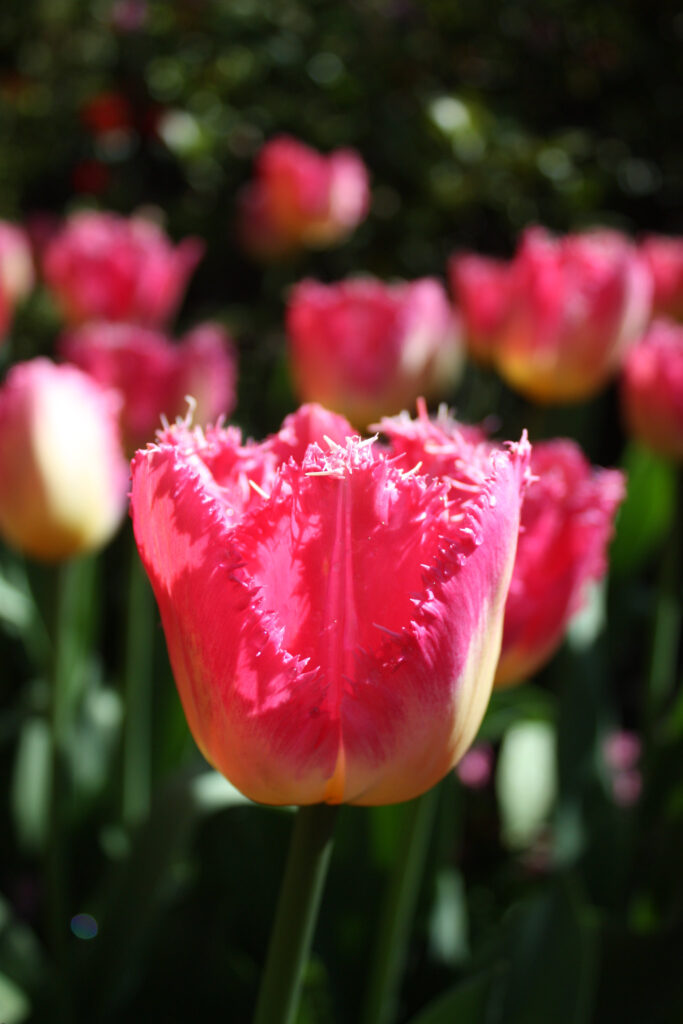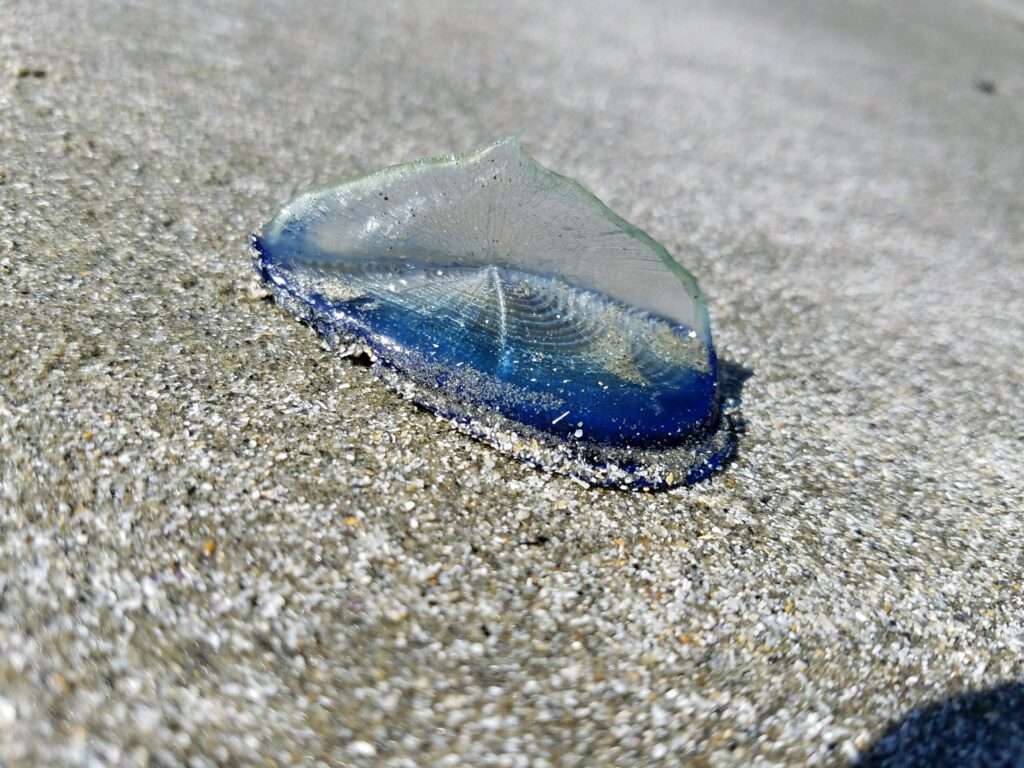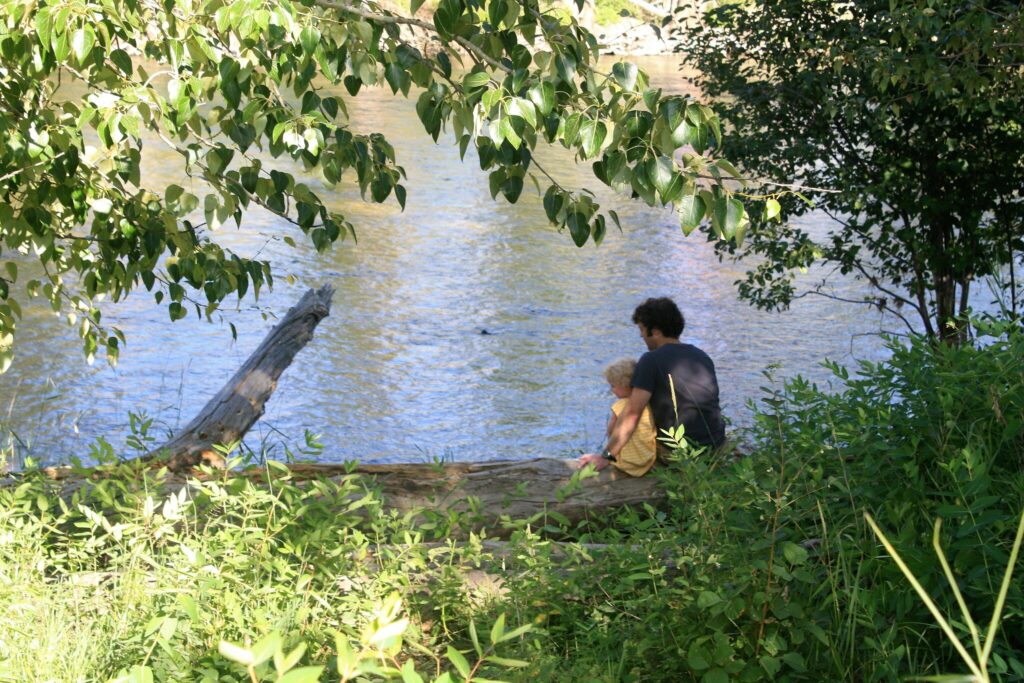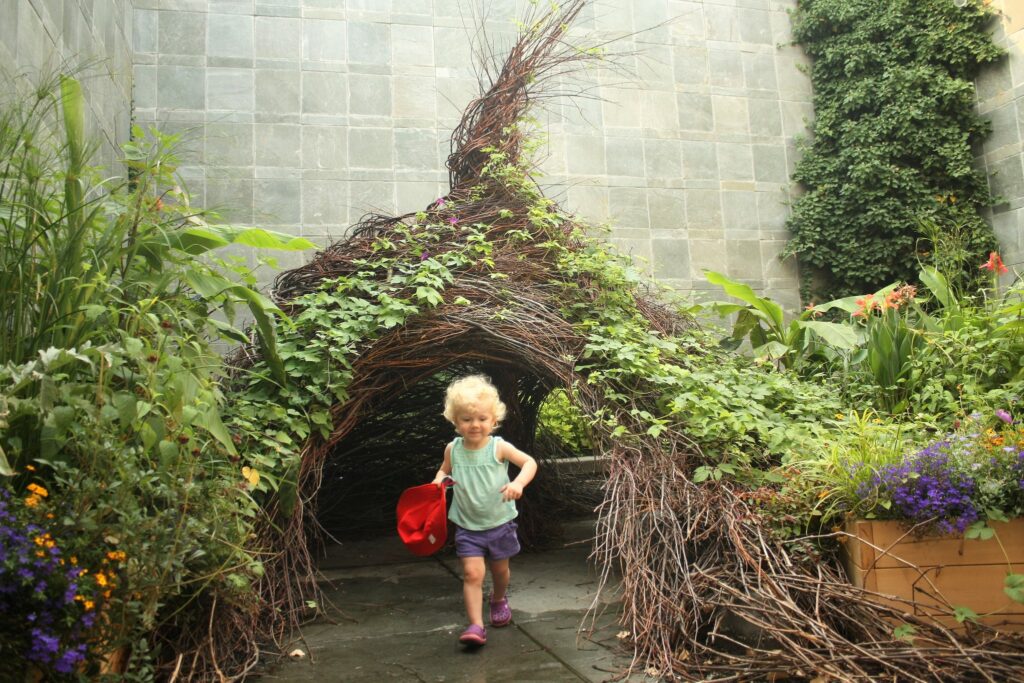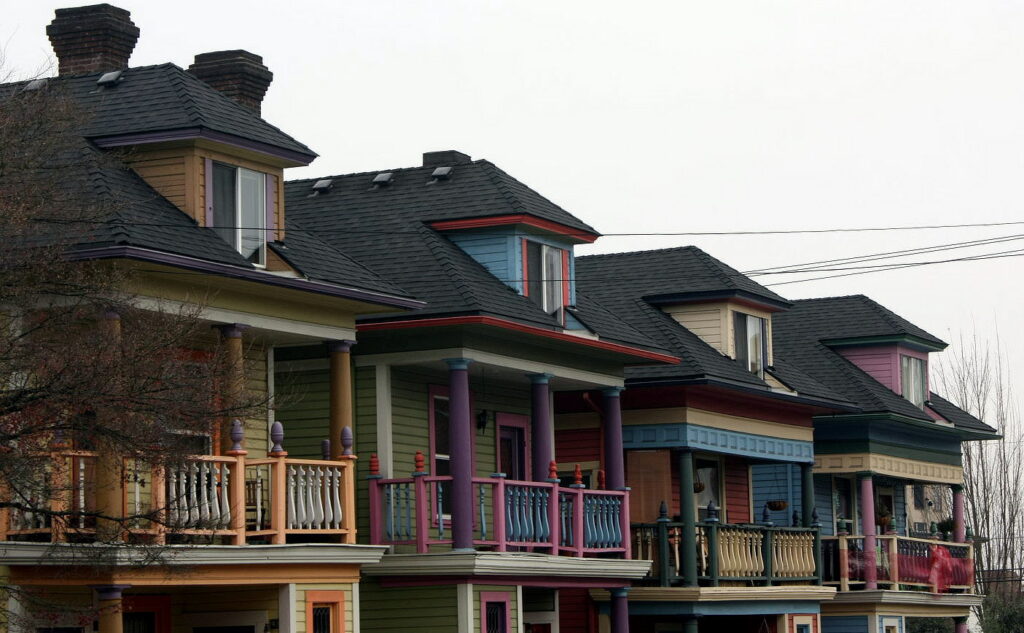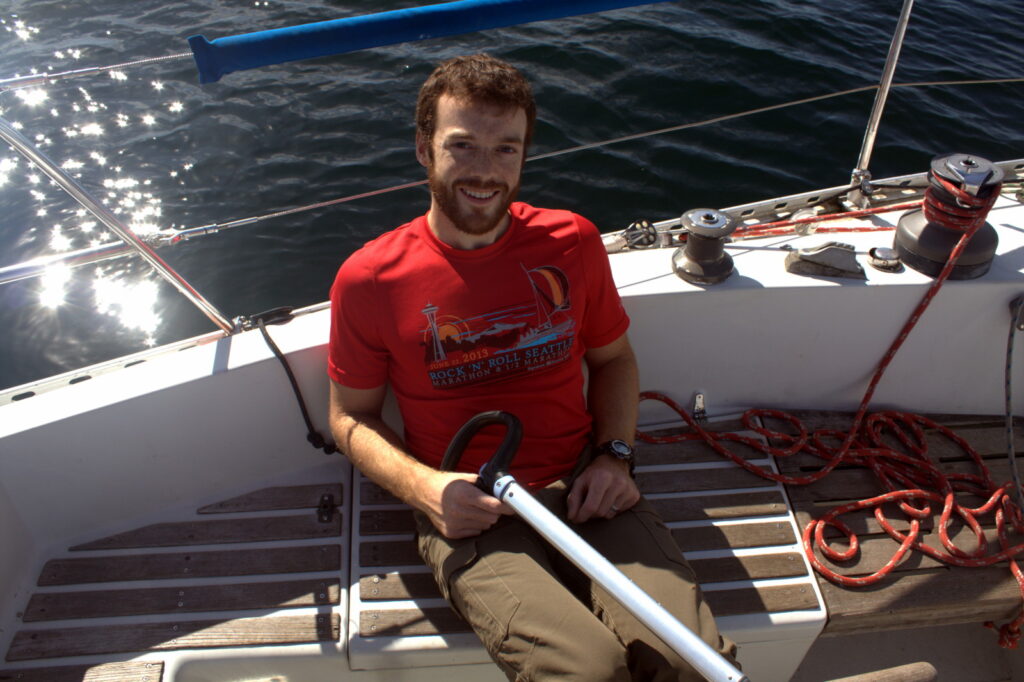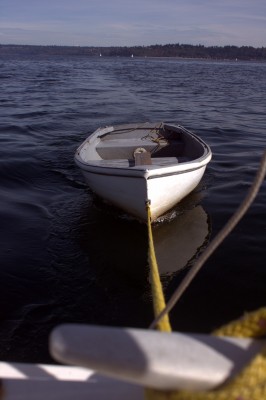In A8’s first 2 years, she visited 11 US states and British Columbia. These adventures included a few small road trips and 12 round trip flights. I want to share how we survived and had fun. I share about expectations and then tips for packing, riding on the plane, and hitting the road.

Expectations
We love adventures with our daughter but we needed to adjust our expectations. The biggest change was reducing the amount we do each day. We typically wake early, go on a morning adventure, return to nap, do something small in the afternoon, and return early for bed. For the first year, we could skip the naps and instead explore while she slept in a baby carrier. We also get nicer and more spacious accommodations compared to before kids. We love balconies or patios for while she is sleeping. We prefer kitchens so we do not need to eat out every meal and can prep snacks. And for longer trips, we need access to laundry facilities.
Packing
Packing depends on the trip but I recommend the following at minimum:
- Diapers/Wipes: We pack all we need for a shorter trip. If more than a long weekend, we used to bring some and buy a pack at our destination. But we eventually learned that packing all diapers needed meant increased packing space coming home. We always have a full pack of wipes and back up diaper bag supplies available while travelling. We do cloth diapers at home but stick to disposable when travelling.
- Pumping supplies and bottles: I only bring pumping supplies if on a trip that I plan to spend time with friends or family minus the little one. For us that means only when we are visiting the grandparents and we can get away.
- Clothes: This depends on where we are going. If the trip is more than a long weekend, we plan on doing laundry at least once. Layers are important to keep baby warm or cool as needed. I found I also need more clothes for myself than before kids due to spills and spit up.
- Thermometer and Medicine: We often forget to bring over the counter medicines with us. As a result, one of us would need to run to a pharmacy in a city we don’t know at 1am because our daughter has a high fever.
- Snacks: These of course change has she moved onto solids but we tend to let her have a bit more sodium and sugar on plane rides to keep everyone happy.
- Toys/Activities: Our child is most happy with books. We bring along a few of her favorite books and smaller toys. Puppets are fun on airplanes. On our most recent flight at a little over 3 years old, we also brought crayons and coloring books. We have managed all flights and long car rides (so far) without a screen except going through photos.
- Car seat: When flying, we bring our car seat and check if for free. We check it even when a seat is available to place it in, because we prefer the extra space. We did not bring one to Chicago and Las Vegas since we relied on public transit. In Vegas, we rented a car seat with our car rental when we ventured to Zion. The car seat made her legal but we questioned how safe it was.
- Stroller/Carrier: We brought a stroller on our first trip and never bothered again. It helps with managing an infant car seat through the airport but was a pain otherwise. We find it easier to bring a carrier and no stroller. We check the car seat and bags as soon as we arrive at the airport and then wear her in a carrier. In her first flight as a three year old, she rode around on her new Trunki. Note, We later retired Trunki because it added more hassle than value.
Babes on Planes
We didn’t purchase tickets for our daughter when she was under 2. We preferred saving the money and we figure they end up in our laps either way. We have friends that buy a ticket for their little one for convenience, safety, or for fear of the car seat getting damaged in baggage. As for the latter, our car seat received only cosmetic damage. Although we did not buy a ticket, we always tried for a third seat. If available, we booked the aisle and window seats of an empty row. The middle seat stays empty or the occupant is happy to switch. With Alaska, we called to have the middle seat blocked, which they do until the flight is full.
Out of concern for her developing ears, we used headphones for our daughter’s first flight at 5 months old. We always pack these just in case but they are usually not needed. We found that for us the key to flying was nursing. I nursed during take off, landing, and napping. We also changed her diaper every chance and we let her move around when possible (even if between laps). Once she hit toddlerhood, we started providing snacks and activities. Last, if given the opportunity to check bags for free, we always take it. We often check our bags for free with the car seat when we first get to the airport. This makes moving around the airport and plane easier.
We love that travelling with little ones comes with a little help:
- Free car seat and stroller check
- Early boarding while they are under 3
- Seat hold – Alaska will block the seat until the flight fills.
- Free flight until they are 2 years old
Babes on Wheels
I find road trips harder than flights because I cannot nurse and change diapers without stopping. It doesn’t help that our kids tend to dislike cars and we do not provide screens for easy entertainment. Our first road trip was when she was 2 months old and should have been about 2.5 hours. Between traffic and stops for nursing and changing diapers, it took us 5 hours. It was exhausting.
By the time we did a big road trip when she was a little more than 2 years old, she was a champ. She would chat with us, play with toys, and read her books as we drove. We did another big road trip once she was a potty trained three year old and we had a 6 month old and the trip was surprisingly smooth. I often found myself in the backseat soothing both kids with songs and stories.
We we found helps for a road trip with an infant or toddler:
- We allow for plenty of time to get to our destination. Especially with a baby, we find that the trip duration can double.
- We have found that blow outs are inevitable when taking an infant on a road trip. We change her diaper often (and still get blow outs).
- We keep our distances short. Even once our daughter was 2 years old and we did our road trip to Banff, we never planned for more than 6 hours in one day. We tended to have it at 4 hours and never two driving days in a row. Even for our more recent trip, we are broke a potential 4 hour drive into two days to be safe.
At the end of the day, I find that travelling with young children is not easy but worth it. We love the memories we have of exploring cities, mountains, and beaches with our little girl and we are looking forward to the many adventures ahead.


